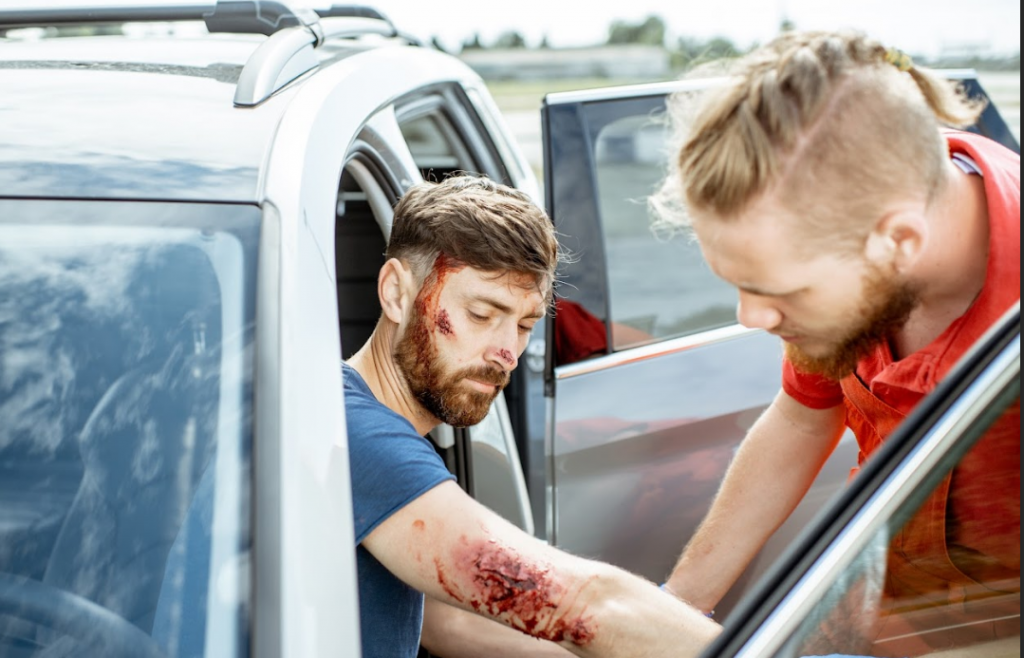Compensation for cuts and lacerations in Arizona car crashes involves various factors and evidence.
It’s crucial to understand how these aspects can affect your claim.
Factors Affecting Settlement Amounts
Several factors influence settlement amounts for cuts and lacerations.
Severity of the injury matters; deeper cuts that require stitches or surgery may lead to higher settlements. Location of the injury also plays a part, as visible scars, especially on the face, might result in a larger payout.
You need to consider medical bills.
More extensive treatments increase compensation.
Lost wages and the impact on your daily life are also important. If you miss work or can’t perform certain activities, it could raise the settlement figures.
Pain and suffering might be considered, though this is more subjective.
Role of Medical Documentation in Claims
Medical documentation is key for a strong claim. Detailed medical records prove the extent of your injuries.
Doctor’s notes describing the cuts and required treatments support your case.
Photographs of your injuries can provide visual evidence.
Keep all receipts and bills from your treatments.
Accurate documentation of costs helps calculate your claim.
Follow-up visits and physical therapy should also be documented. Comprehensive records ensure the insurance company acknowledges the seriousness of your injuries.

Hire a Lawyer
Navigating a car crash injury claim involves selecting a good lawyer and dealing with insurance companies. Both steps are crucial to achieving a fair settlement.
Selecting a Personal Injury Lawyer
Hiring a personal injury lawyer is essential for dealing with the complexities of an injury claim.
A good lawyer helps by negotiating medical bills, gathering evidence, and improving your chances of a fair settlement.
You need a lawyer experienced with car accident cases.
They should know how to gather evidence like traffic camera footage and police reports. This strengthens your claim and can lead to a better outcome.
Shop around and compare lawyers. Look for those with a good track record in personal injury cases.
Reviews and referrals can be very helpful.
Strategies for Dealing with Insurance Companies
Dealing with insurance companies like State Farm, Geico, or Progressive can be challenging.
They often require recorded statements and will call you frequently, which can be stressful.
Never give a recorded statement without your lawyer.
Insurance agents might twist your words to reduce your claim value.
Let your lawyer handle all communications.
Keep detailed records of all interactions with insurance companies. Write down dates, times, and the substance of each conversation.
This can be useful if there are disputes later.
By following these strategies, you can better manage the claims process and increase your chances of a favorable settlement.
Medical Considerations and Costs
When dealing with cuts and lacerations from a car crash, it’s crucial to consider both treatment expenses and recovery time before returning to work.
Evaluating Treatment Expenses
Medical bills for cuts and lacerations can add up quickly.
Immediate costs might include stitches, wound cleaning, and possibly surgery.
Cost Breakdown:
- Emergency Room Visit: $1,200 – $2,500
- Wound Cleaning & Stitches: $300 – $3,000
- Surgery (if needed): $5,000 – $10,000+
- Follow-up Visits: $100 – $500 per visit
The total expenses can vary based on the severity of the injury and the need for specialized care or medication.
Insurance may cover some of these costs, but out-of-pocket expenses can still be significant.
Return to Work Guidelines
Returning to work after a cuts and lacerations injury depends on the injury’s severity and your job’s physical demands.
For light office work, you might return within a few days to a week.
If your job is physically demanding, like construction, you might need 2-3 weeks or longer.
Recovery Timeline:
- Light Work (office jobs): 3-7 days
- Medium Work (retail): 1-2 weeks
- Heavy Work (construction): 2-4 weeks
Always follow your doctor’s advice and consider physical therapy if required.
Taking the proper time to heal can prevent complications and ensure a full recovery.

Settlement Process Timeline
The process to settle a cuts and lacerations injury case in Arizona can be complex and time-consuming.
This timeline breaks down the key stages you can expect.
Initial Filing to Resolution
After the accident, the first step is filing a claim. This usually involves notifying the insurance company about the injury.
You will need medical records, police reports, and witness statements. Gathering this information may take a few weeks.
Once the claim is filed, negotiations with the insurance company begin.
This step can take several months, depending on how much evidence is needed and how willing the insurance company is to settle.
Often, they might offer a low initial settlement, which may need to be negotiated.
If no agreement is reached, a lawsuit might be filed.
This adds more time, as both sides exchange information in a process called discovery.
This stage can last several months to a year. Trial scheduling may add even more time, extending the process by another year or more.
Expectations at Each Stage
During the initial filing stage, you should expect to gather all necessary documentation within weeks to months. The negotiation phase can vary a lot; some settlements happen in a few months, while others take longer.
If your case proceeds to litigation, prepare for a lengthy timeline. Discovery can be lengthy, often taking several months to over a year. Be ready for depositions and court hearings, which can extend the timeline.
Throughout the process, maintain communication with your attorney.
They will help navigate each stage and keep you informed.
Keep all your records organized to help speed up the process when possible.
Documenting and Proving Your Injury
Accurate documentation is crucial for your injury claim.
Start by seeking medical treatment right away.
This ensures you have medical records as evidence of your cuts and lacerations.
Steps to Document Your Injury:
- Visit a Doctor:
- Get a detailed report of your injuries.
- Follow prescribed treatments and therapy.
- Take Photos:
- Capture clear images of your injuries.
- Include dates on all photos.
- Keep Records:
- Save all medical bills and receipts.
- Track lost wages and other financial impacts.
Why Hire a Personal Injury Lawyer?
A lawyer can help you in several ways:
- Negotiating Medical Bills:
- They can discuss lower costs with medical providers.
- Gathering Evidence:
- Obtain traffic camera footage.
- Secure the police report.
Example:
| Type of Evidence | Description |
|---|---|
| Medical Records | Doctor’s notes |
| Photos | Dated images of injuries |
| Bills | Hospital / therapy receipts |
| Lost Wages | Proof of missed work |
By collecting and organizing this information, you can strengthen your case.





